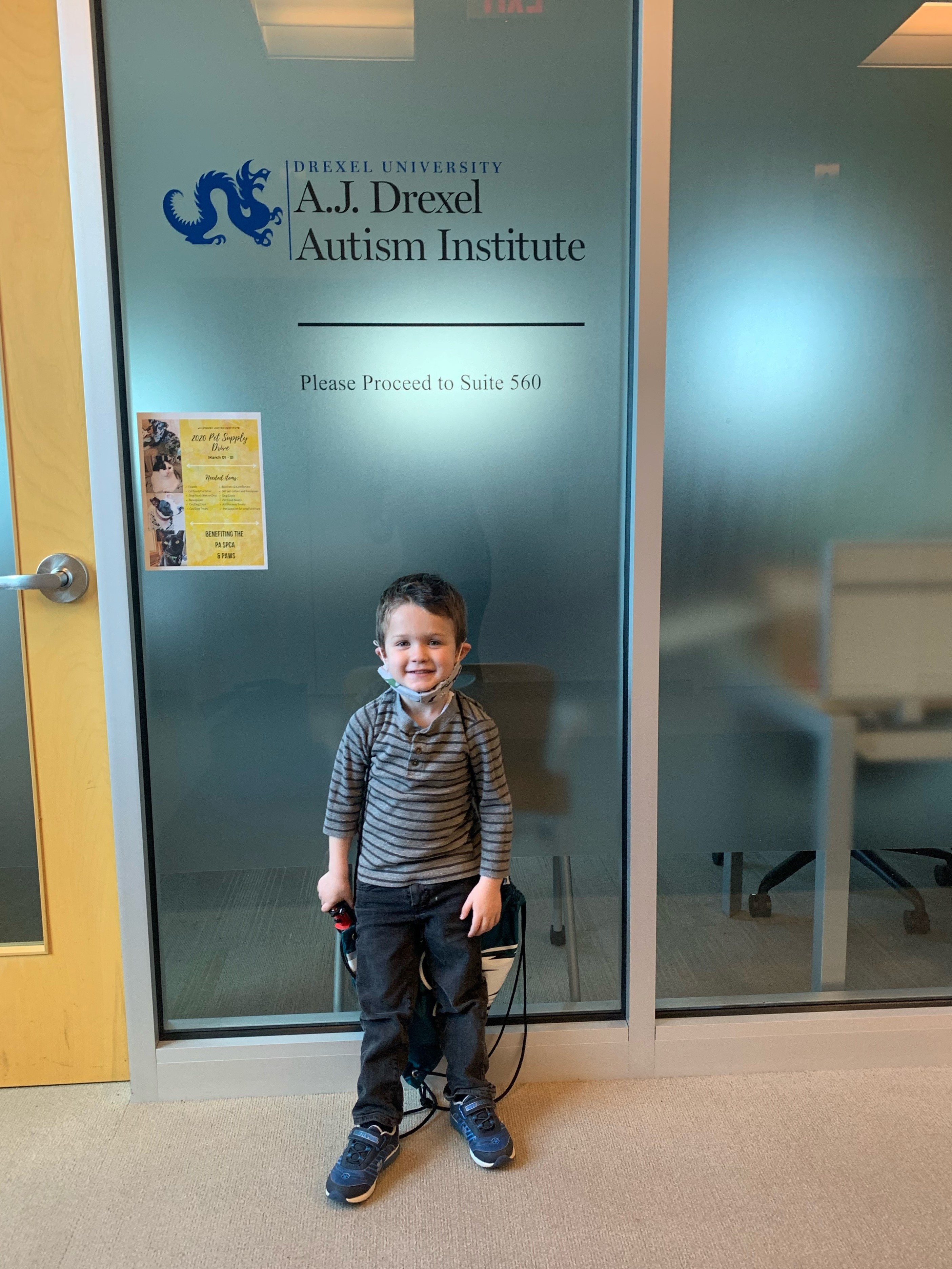The Concannon Family's Story

Clarke on a visit to the Institute
January 24, 2022
Shortly after his first birthday, Laura Concannon started to worry about her son Clarke. Though he had started to use a few words, like “DD” for his sister Kennedy, it seemed like he was losing language. “I started having concerns that he wasn’t developing properly,” she said. “Not everything was quite right.” Laura took her concerns to the family pediatrician, who told her that Clarke would be eligible for a developmental evaluation by the county in a few months. To get the ball rolling, she scheduled a hearing test, and eventually set up an appointment with the county, who suggested she seek out an evaluation for autism. It was difficult to secure an appointment with a developmental pediatrician – the waiting lists were long. Frustrated but persistent, Laura kept checking in with her pediatrician about potential options. At the end of the day on a Friday, her pediatrician gave her a call. The practice was involved with a study that was using the M-CHAT-R/F, a tool designed by Autism Institute Director Dr. Diana Robins, as well as parental concern, to enroll children in a study that would provide up to a year of early intensive behavioral intervention for children diagnosed with autism. The pediatrician thought the Concannons would be perfect candidates, and referred the family for participation in the Connecting the Dots study at the AJ Drexel Autism Institute.
Soon after, Laura was able to schedule a visit to the Institute. “I was ecstatic, just to know I was going to have him evaluated.” Even though the nature of the visit was nerve-wracking, the Concannons felt at ease with the team at the Institute through a morning of diagnostic tests. When they came back from a lunch break to discuss Clarke’s results, they were informed that Clarke did have autism. “At that point, I kind of expected it, but it was still hard. I started to cry… I was a little worried about, you know, my son's future.” Laura said. The clinician offered to stop the discussion and follow up with them after they had some time to process. “They were so compassionate to me at that moment. I wanted to hear what they had to say, so we pushed through.” When the research team told the family that they’d like to enroll Clarke in the treatment phase of the Connecting the Dots study, the Concannons jumped at the chance. “It was probably the most relieved I had been in a while.”
Children in the US are diagnosed with autism, on average, at the age of 4. Research shows that children who begin autism-specific early intervention when they are very young have better outcomes than children who start treatment later. The Connecting the Dots study was designed to directly relate the early detection strategies in primary care check-ups, which are often critical to helping families access early diagnosis and early intervention, to outcomes as children are getting ready to enter kindergarten. Connecting the Dots is an Autism Centers of Excellence (ACE) network study; Drexel leads the network that also includes the University of Connecticut and the University of California, Davis.
In addition to the Connecting the Dots study, the Concannons qualified for participation in another study at the Institute, “Evaluation of a Video-Mediated Parent Coaching program for Families of Minimally-Verbal Children with Autism,” an intervention program designed to help minimally verbal children with autism to communicate. Using a video library of 12 lessons that were developed in a pilot program, as well as weekly step-by-step instruction and performance feedback sessions, the Concannons learned how to facilitate communication with Clarke using evidence-based educational strategies.
The Concannons worked with the same behavioral therapist across both studies, so she was able to seamlessly discuss Clarke’s progress as well as his family’s efforts to help him communicate more easily. “I was able to do stuff, hand-in-hand with his therapist, and I was able to build on them, and they were able to build on what I was doing…the support was just phenomenal.” Clarke’s grandmother provided childcare while Laura and her husband Kevin were at work, and his therapist was able to share strategies with the entire family. “It gave me the empowerment to know that I'm doing it right. I can't tell you how much that helped in my confidence as a mother. Knowing that I had that power to make a positive impact…that was so empowering.” The Concannon family spent about a year on the parent communication and behavioral interventions.
By the time he turned three a few months after his treatment sessions in the studies ended, Clarke had graduated from using only a few words and signs to make requests for food, drink, and preferred toys, to being able to communicate well enough for his parents to enroll him in a typical preschool. “We have our son because of Drexel.” Laura said. “We have seen Clarke exceed expectations and conquer these issues and problems that he has faced. I want that for every little boy and girl.”